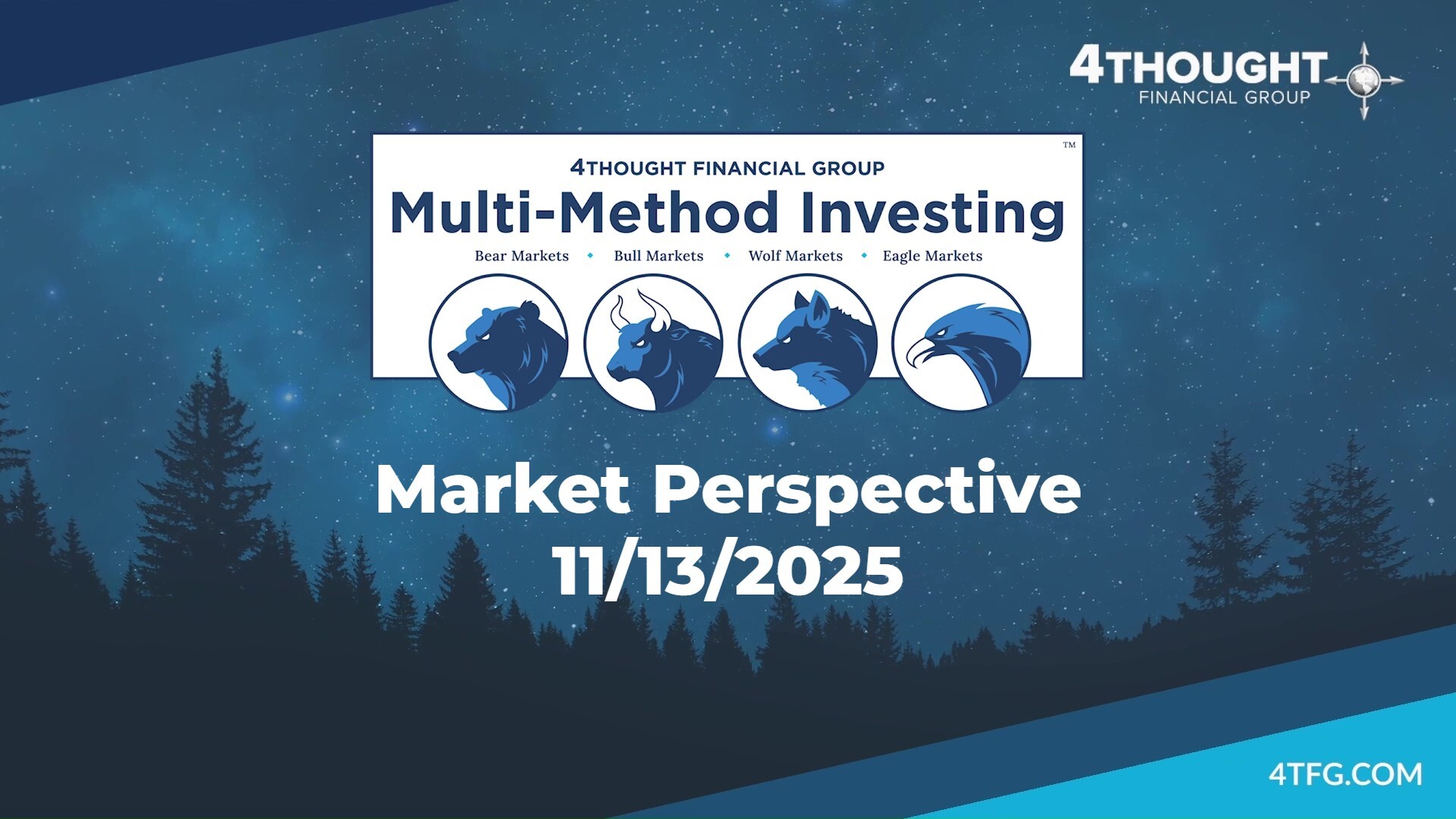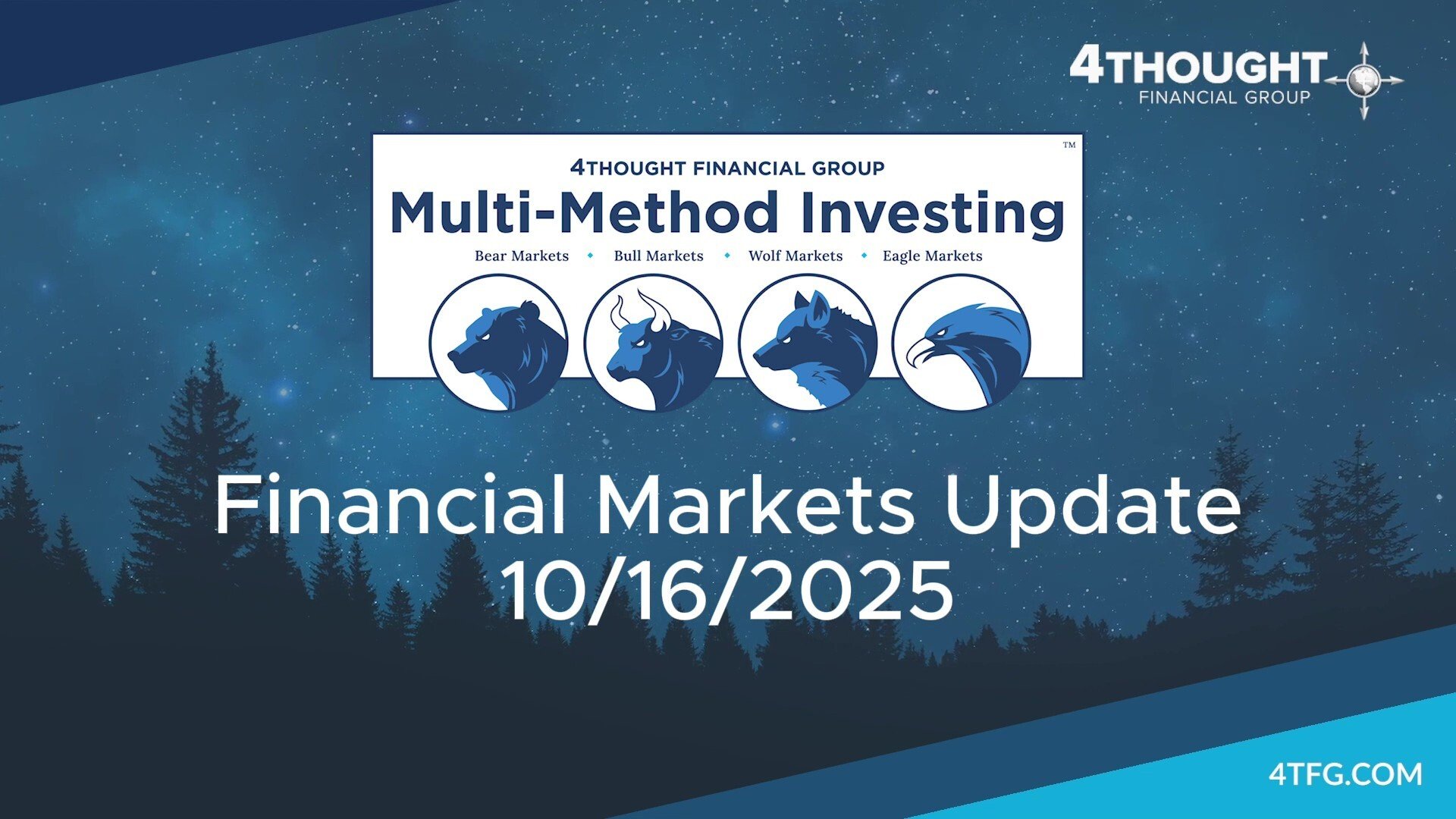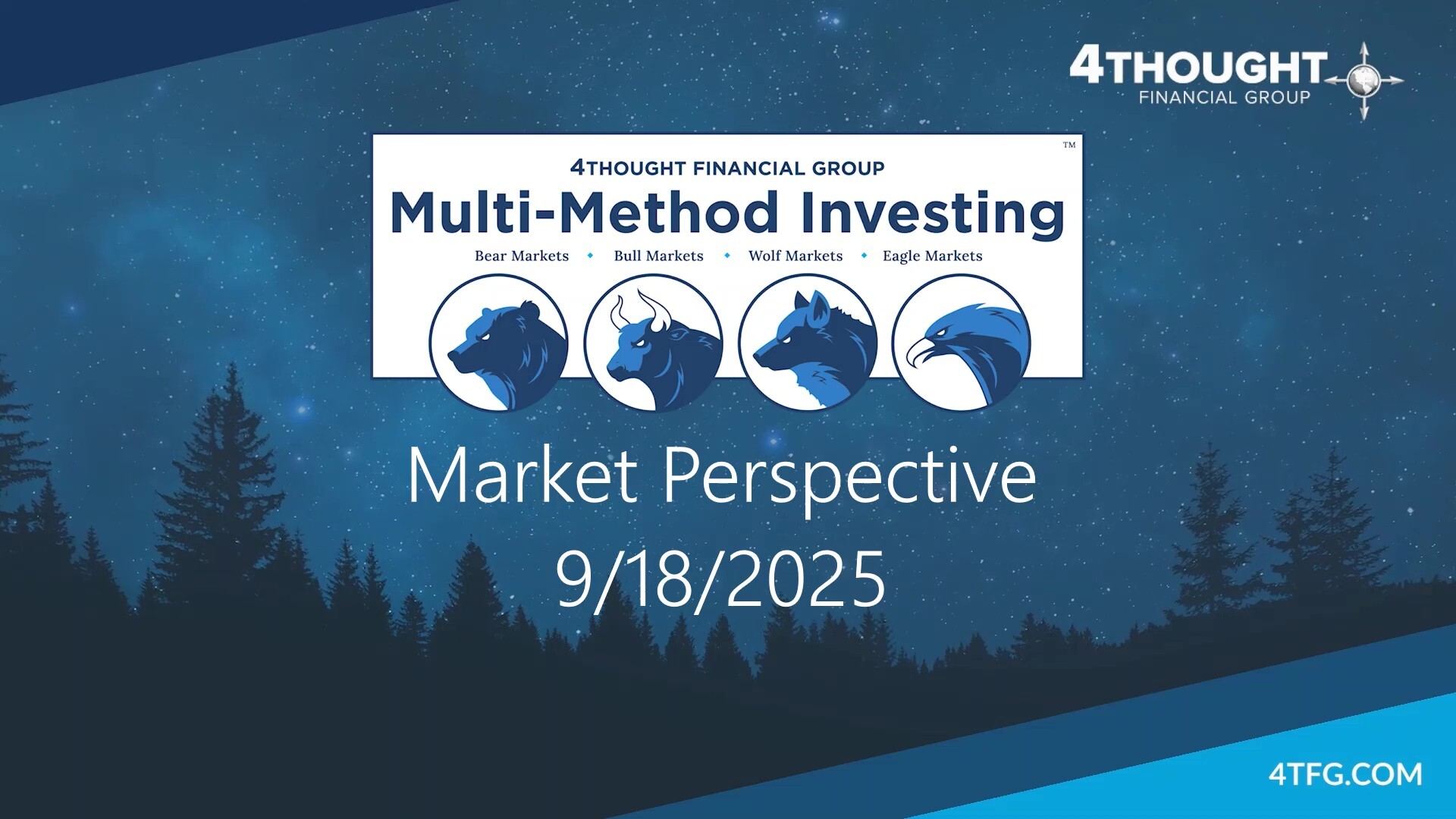4Thought provides you with actionable investment analysis and perspective on the financial markets.
Contact us to determine whether any ideas presented are applicable to your situation before taking any actions with regards to your financial plan or investment portfolio.
Hear from Chief Investment Officer Jesse Mackey in our most recent Multi-Method Investing® Market Perspective.
VIDEO TRANSCRIPT:
I’m Jesse Mackey, CIO of 4Thought Financial Group, and this is 4Thought’s Multi-Method Investing® Market Perspective as of March 5th, 2024.
Financial markets have begun 2024 with divergent returns amongst asset types. Most stock types are showing single digit gains, while US small cap stocks and most bond types show minor losses. US large cap stocks are the best performing publicly traded broad asset type so far in 2024, while US aggregate bonds are the worst.
On Friday, January 19th, the S&P 500 Price Return Index breached its prior all-time record price (last seen on January 4th, 2022). This provided confirmation in arrears that October 13th, 2022 was the bottom of the Bear Market that started on 1/4/22 and that we have been in a Bull Market since 10/13/22. Also recently, on December 8th of 2023, the S&P 500 Index completed its first "Wolf Market" (one that began on 7/27/23) in the larger Bull market. We define a Wolf Market as a period including a 10%+ correction (but less than 20%), plus the recovery back to the pre-correction peak price. But the most recent news is that on this past Friday, March 1st, we recorded confirmation of an Eagle Market (a period that includes trailing 1-year returns of 30% or greater without any intervening 10%+ corrections). Both Wolf Markets and Eagle Markets are subsets of the traditionally defined Bull Market. All of this has implications for portfolio management strategy.
The history of the S&P 500 Index since 1950 reveals that once Bull Markets have been identified (at which point a new record price has been achieved following a Bear Market), they have continued for an average of an additional 2.44 years until the beginning of the next Bear Market (with the shortest period at 6 days and the longest at 7.44 years) and they've shown a further cumulative gain of 52.53% (with the smallest at 2.09% and the largest at 225.74%). Looking at Bull Markets as a whole (from trough to peak), on average they have lasted 4.29 years (with the shortest at 1.15 years and the longest at 9.55 years) and have shown an average total cumulative gain of 133.09% (with the smallest at 44.62% and the largest at 341.05%).
Since the most recent Bull indication on January 19th (of 2024), only 46 days have elapsed (with a gain of 6.48% as of the close of business yesterday), whereas 1.39 years have elapsed since the Bear Market trough on 10/13/22 (for a total cumulative gain of 46.95% as of the close of business yesterday). This indicates that we may still be early in the cycle based on historical averages. Furthermore, historically many Bull Markets are intersected by several Wolf Markets (an average of 2-3, but up to five) and multiple Eagle Markets (an average of 2, but up to four) before a new Bear Market begins. This also may bode well for the continuation of the current broader traditionally defined Bull Market given that only one Wolf and one Eagle have now been confirmed so far.
Based on analysis of the complete historical market type data set using our Multi-Method Adaptive algorithmic process, we are now allowing overweight allocations to Strategic Asset Allocation and Liability-Driven Investing, with underweights to Opportunistic Investing and Selective/Concentrated Investing.
From a probabilistic analysis perspective, stocks of most types range from near fair value to moderately overvalued, while bonds of most types range from near fair value to slightly overvalued. Long term US Treasury Bonds now reflect the most attractive pricing relative to the alternatives, while US growth stocks are the least attractive.
Against this backdrop the outlook for stocks in general is now neutral to slightly positive over the intermediate term based on the overall aggregate of our historical market-type data analysis and quantitative probabilistic analysis.
I hope this was helpful. If you have questions or you’d like to discuss what this means for your particular situation, please contact 4Thought at 516-300-1617 or at info@4tfg.com – and don’t forget to subscribe to our blog feed and our YouTube channel. Thanks for watching, and see you next time.






Leave a Comment